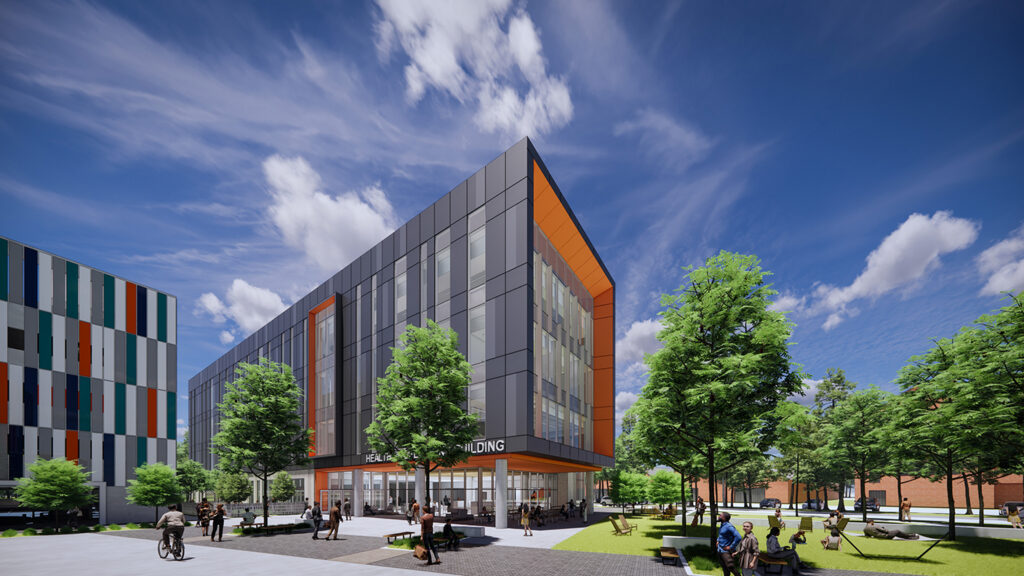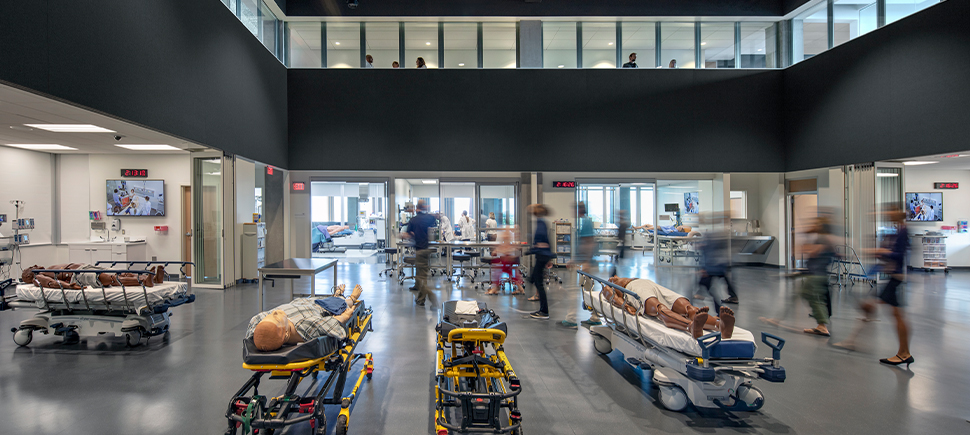At Kitchell, we are thrilled to announce the commencement of our newest project in Texas: the Health Professions Building at Sam Houston State University. Breaking ground next month, this new venture underscores our commitment to enhancing the educational landscape for future healthcare leaders.
Rendering courtesy of SmithGroup
A Legacy of Health Education Construction
For over 70 years, Kitchell has been at the forefront of constructing state-of-the-art facilities that foster innovation, learning, and excellence in healthcare education. Our portfolio boasts the completion of medical teaching projects totaling over $2.3 billion in value, all while nurturing long-standing partnerships with prestigious institutions across the nation. From the University of Arizona’s award-winning Health Sciences Innovation Building to the comprehensive Clinical Skills & Simulation Suite at the University of California Riverside to teaching hospitals like UC San Diego Health’s Jacobs Medical Center, our projects have consistently set the benchmark for excellence in health education.
In the ever-evolving world of healthcare, the need for cutting-edge educational facilities that mirror the complexity and dynamism of real-world medical environments has never been more critical. Unique medical education spaces, such as advanced simulation labs, are at the forefront of this transformative shift, offering immersive simulation events that incorporate game-based learning to prepare students for the unpredictable nature of patient care. These labs go beyond traditional learning, enabling students to engage in scenarios that replicate emergency situations, surgical procedures, and clinical decision-making in real-time. Additionally, the integration of nursing and clinical skills training areas within these spaces ensures that students gain hands-on experience in patient care, from basic assessments to complex interventions.
Above: Simulation Center at the University of Arizona’s Health Sciences Innovation Building
Pharmacy training spaces within these innovative educational facilities are designed to provide students with a thorough understanding of medication management, compounding, and the critical role pharmacists play in patient health outcomes. Surgical and imaging technology training areas are equipped with the latest equipment, from laparoscopic simulators to state-of-the-art imaging scanners, allowing students to hone their technical skills and understanding of anatomical structures in a risk-free environment. Moreover, the advent of 3D-printed tissues has revolutionized the way future medical professionals learn about the human body, offering unparalleled opportunities for advanced simulation support. This technology enables the creation of realistic organ models and complex tissue structures, providing a tactile learning experience that textbooks simply cannot match.
Health informatics spaces within these educational settings are designed to bridge the gap between healthcare and technology, equipping students with the knowledge and skills to navigate and leverage electronic health records, data analysis, and digital health applications. These spaces foster an understanding of how informatics can improve patient care, streamline workflows, and contribute to the advancement of healthcare systems. By integrating these diverse yet interconnected learning environments, medical education facilities are not just preparing students for the healthcare landscape of today but are paving the way for the innovations and challenges of tomorrow.
Download Kitchell’s recent Health Education experience.
In building these medical education spaces, from simulation labs to health informatics suites, our expertise extends beyond mere construction to a profound understanding of the specific needs and intricacies of each area, including the costs associated with creating such advanced, multifunctional environments. Our approach is rooted in a deep commitment to innovation and efficiency, ensuring that each project not only meets the highest standards of educational excellence but also aligns with budgetary considerations, thereby delivering value without compromising on quality or the educational mission.

